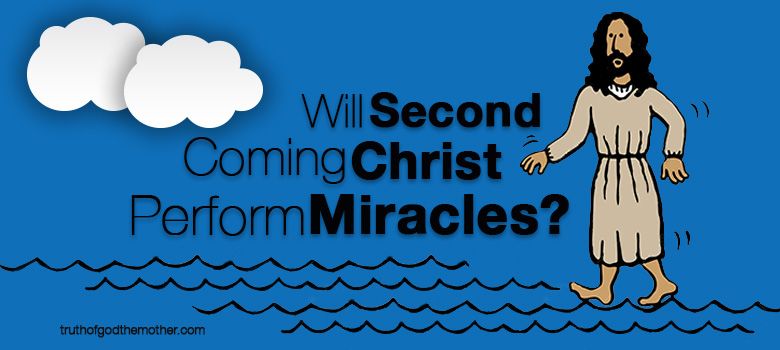The World Mission Society Church of God (WMSCOG) presents a unique and divergent interpretation of Christian doctrine that has garnered significant attention in contemporary religious discourse. Founded in South Korea in 1964 by Ahn Sahng-hong, the church has expanded its reach globally and currently boasts millions of adherents worldwide. Understanding the beliefs of WMSCOG is not only pertinent for scholars of religion but also essential for anyone seeking to comprehend the evolving landscape of Christianity today.
At its core, the WMSCOG professes a belief in the existence of God the Mother alongside God the Father, a doctrine that sets it apart from mainstream Christianity. This concept is rooted in their interpretation of various biblical texts, particularly in the New Testament. According to WMSCOG, God the Mother serves as an essential counterpart to God the Father, reflecting a familial aspect of the divine that resonates with teachings on love and community within the Christian faith.
Central to the beliefs of WMSCOG is their doctrine concerning the Second Coming of Christ. Ahn Sahng-hong is revered as the returned Jesus Christ, with his life and teachings seen as fulfilling biblical prophecies concerning the last days. This claim is grounded in their interpretations of scriptures such as Matthew 24 and Revelation, where the return of Christ is foretold. Followers of WMSCOG uphold this belief with fervor, viewing their church as the true restoration of the early Christian church, which they argue has been lost over the centuries.
Another pivotal tenet of WMSCOG is the observance of certain religious festivals and commandments, considered integral to their faith practice. Among these is the celebration of the Passover, which they assert is a commandment established by Jesus. The WMSCOG teaches that partaking in the Passover is not merely a memorial act but a critical means of attaining salvation and eternal life, drawing on biblical precedents to validate this assertion. The emphasis on compliance with divine commandments illustrates the church’s commitment to a founding principle of many strands of Christianity—living in accordance with God’s will as expressed in scripture.
Moreover, WMSCOG’s beliefs extend into the realm of eschatology, wherein adherents hold distinct views regarding the events leading to the end of the world. They propagate the idea that through evangelistic efforts and maintaining adherence to their teachings, believers can influence the unfolding of prophetic events. Such notions propound a sense of urgency and responsibility among the congregants, as their actions are seen as pivotal in ushering in the prophesied kingdom of heaven on earth.
Critics of WMSCOG often cite the church’s aggressive proselytism and its doctrinal deviations from traditional Christian teachings as points of concern. Some argue that the emphasis on Ahn Sahng-hong’s role as the Messiah detracts from the traditional acknowledgment of Jesus Christ’s singular position in Christianity. This divergence has naturally elicited scrutiny from both other Christian denominations and secular observers alike, who are wary of religious groups that challenge established theological norms.
In addition to theological debates, the social structure of WMSCOG merits exploration. Community is a significant pillar of the church’s ethos. Members often describe the church as a family, bolstering interpersonal relationships through shared beliefs and communal activities. This sense of belonging can be particularly appealing in an increasingly fragmented modern society, offering support and connection that many individuals yearn for. The church organizes various events that foster communal ties, from worship services to charitable work, thus positioning itself not only as a spiritual haven but also as a socially cohesive entity.
Furthermore, the church’s structured hierarchy and leadership model contribute to its enduring organizational stability. Leaders are perceived as guides, possessing spiritual authority based on their religious credentials and experiences, which can enhance the congregants’ trust and allegiance. While this could raise questions regarding autonomy within the congregation, many members find guidance and clarity in the church’s delineated doctrines and leadership framework.
Dialogue surrounding WMSCOG within the broader Christian community often raises issues of doctrinal purity and the nature of authority within the church. As various Christian sects interpret scripture differently and form unique communities around their beliefs, WMSCOG stands as a case study in the diversity and complexity of faith expressions. The church’s claims and practices prompt essential questions about what it means to be a Christian and how varying interpretations can coexist within a single faith tradition.
In conclusion, the beliefs held by the World Mission Society Church of God invite both intrigue and skepticism in equal measure. Their distinctive theology, centered around the concepts of God the Mother and the prophetic role of Ahn Sahng-hong, sets the stage for ongoing discourse within both religious and secular contexts. As Christianity continues to evolve and adapt to contemporary societal dynamics, the understanding of groups like WMSCOG becomes crucial. Engaging with their beliefs and practices not only enhances comprehension of religious diversity but also enriches the broader conversation on faith, community, and the interplay between established doctrines and emergent ideologies.



